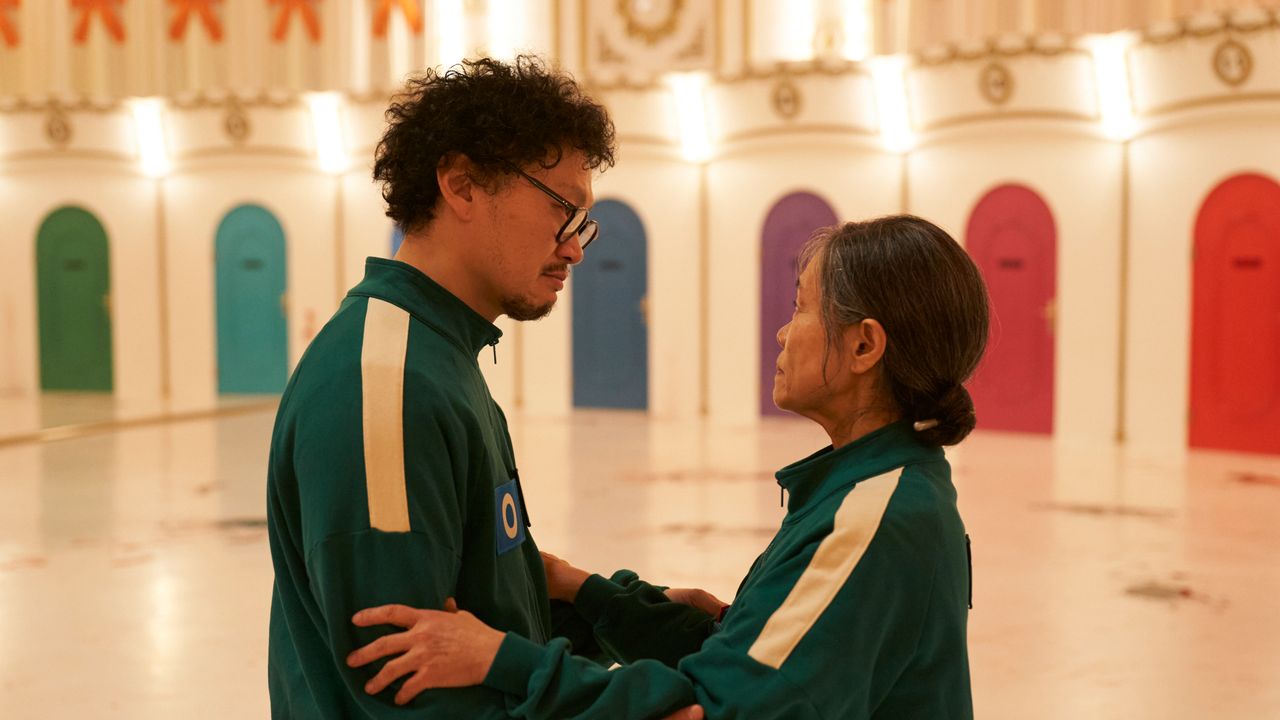Squid Game creator Hwang Dong-hyuk can still remember playing Mingle, a schoolyard game in which contestants must form groups based on numbers that a
Squid Game creator Hwang Dong-hyuk can still remember playing Mingle, a schoolyard game in which contestants must form groups based on numbers that are called out. If you’re left without a group, you’re out. In Hwang’s memory, one game came down to him, his best friend, and one other boy. The number “two” was called out. “If we two just hugged each other, then we would be done,” he says. “But somehow we were fighting for the little guy, and we were kind of holding onto his arm trying to form a team of two.”
Hwang knew early on that he would include Mingle in the second season of his hit series Squid Game. The game has a lot of built-in tension—which ramps up significantly if the repercussion of losing is death. “Mingle is a game that sometimes makes you team up, which connotates solidarity, but also sometimes you have to abandon people,” he tells Vanity Fair through a translator. “So it has both sides. It’s about unity, but also about dividing between people.”
In the season’s sixth episode, the surviving players enter a room to find a carnival-like setting arranged around a giant rotating disk. When the music stops playing, a number is revealed. They have to scramble to form groups of that number, run into one of the smaller rooms surrounding the merry-go-round, and shut the door. If a player is left without a group, they’re killed. (Watch the clip below.)
It’s a dramatic game made all the more intense by the interpersonal conflict brewing between the characters—particularly Geum-ja (Kang Ae-shim) and Yong-sik (Yang Dong-geun), a mother and son who are separated in one of the most heart-wrenching scenes of the season. Hwang and his team—which included production designer Chae Kyoung-sun and cinematographer Kim Ji-yong—created Mingle without the apply of CG so that its emotional moments could feel as realistic as possible. “This one was especially challenging because there were so many people involved,” says Hwang. “There was so much intense action going on, and then we also had the emotional trauma.”
The Mingle scene was filmed at Korea’s largest soundstage, the Daejeon Studio Cube. Hwang wanted the set to feel welcoming and radiant; Chae took inspiration from the design of family-friendly carnivals, especially the merry-go-rounds. “It’s a very fantasy-like carnival, but there’s a massacre going on,” says Chae.
She used horse imagery throughout the design while incorporating the show’s signature square, circle, and triangle symbols. The plate really did spin, and could hold hundreds of actors—until it eventually broke down, and wouldn’t start spinning if anyone was standing on it. The team got around the issue by starting the plate while it was empty, then tasking the actors to jump on as the scene began. Sometimes, that meant getting hundreds of people to board at the same time. “So this scene was quite difficult to shoot even before calling out action, and after calling out action,” says Hwang.
When Mingle is played on a playground, the participants simply hug each other to show which group they’re in. But Hwang and Chae thought forcing the characters to shut themselves into designated rooms would heighten the tension even further. “Because there’s distance between the merry-go-round and the rooms, there could be more drama,” says Hwang. “And when they do lock themselves up behind the colorful doors, there could be their own stories happening in all of those rooms.” They added a slit in each door so the players inside would see those left behind being killed.
No Ju-han/Netflix

COMMENTS